#archaeology wives
Explore tagged Tumblr posts
Text
currently insane about Janet and Helena again (as always but especially now) so pls feel free to ask me questions or even just give me any prompt at all and I will offer you Information on them
19 notes
·
View notes
Photo
aaah!!! i recognize that gold snake armband!! that's a real artifact that was found at pompeii!

it's one of several 'gold snake wrapped around the arm' bracelets found in pompeii!
so crowley is very fashionable and on trend in this piece! that's so cool!!!

“Play That One Again?”
@ineffable-wives-central Femslash February 20/28 - “History”
#sorry ancient mediterranean archaeology is a special interest of mine#and was my major in college#very cool piece!#art#fanart#good omens#a/c#ineffable wives#rb#image id
1K notes
·
View notes
Text

Book review: Goddesses, Whores, Wives & Slaves by Sarah B Pomeroy (1975)
10/10
This was impossible to put down. A fascinating and vibrant history of Ancient Greek and Roman Women: from all walks of life, using just about every resource available within art and archaeology and anthropology.
It’s also also very very well researched and informative with a HUGE bibliography and a great index and lots of notes for the nerdy (aka me) who has already highlighted the next set of books to chew on.
Overall she argues (and does so persuasively with a great deal of thought and objectivity) that Roman women seemed to have enjoyed a higher quality of life than the Ancient Greek women because of generally (especially in upper class households) having a more public-facing life, being slightly more protected by the pater familias model of the Roman household, and having slightly more social mobility.
However a shout out goes to the Amazons and their social model for living 🏹🏹🏹
If you’re curious about the roles of women in varying Hellenistic and classical contexts, this is a must-read.
Her final words are so interesting and prescient too: “Serious intellectual thought about women continued: Stoicism, the most popular of the Hellenistic and Roman philosophies, directed women’s energies to marriage and motherhood. The argumentation is brilliant and difficult to refute. And this rationalized confinement of women to the domestic sphere, as well as the systemization of anti-female thought by poets and philosophers, are two of the most devastating creations in the classical legacy” 😢💔
Also, if you’re upset by reading about things like sexual slavery and infanticide, it might not be the book for you.
Overall, it’s staying in my collection and I’ll definitely be referring to it again.
#feminism#terfblr#radical feminist safe#radical feminist#andrea dworkin#radical feminism#book review#book recommendations#feminist books#feminist book review#history#ancient history#women’s history
393 notes
·
View notes
Text

I shine only with the light you gave me. — The Moon Will Sing by The Crane Wives
INPRNT
-
This is a recreation of The Meeting on the Turret Stairs (1864) by Frederic William Burton. Credit to the wonderful @soulhollow for giving me the brilliant idea and commissioning this 💚
-
The costume design for Alfred
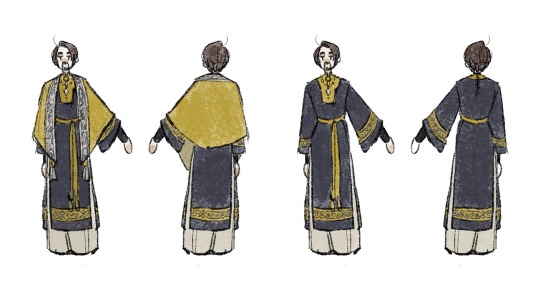
They said they wanted to see Alfred in purple/gold tones, so I self-indulgently designed a costume for Alfred (though again not necessarily trying to be historical accurate)
-
Details for archaeology nerds (So it happens again I guess)
1. The tablet-woven bend
Design is loosely taken from an actual archaeological find from the Taplow Barrow in Buckinghamsire, dating to the early 7th century. The original piece really had the gold threads on it by the way. You can see the modern reconstruction here.

2. Pattern on the tunic
Taken from a part of an arcade illustration in the Royal Bible (Royal 1. E. vi, 4r.) c. 1000-1025 in British Library, London. Added some vine patterns that are quite common to see in insular art for reasons.
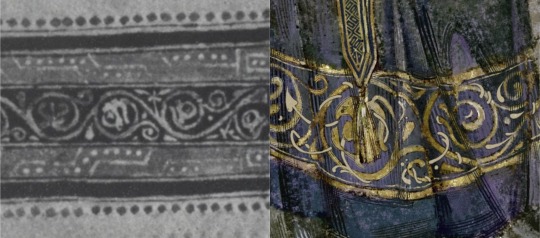
3. Pattern on the shawl
Taken from a part of the stole and the maniple in St. Cuthbert’s coffin, dated to early 10th century, now in Durham Cathedral Museum.
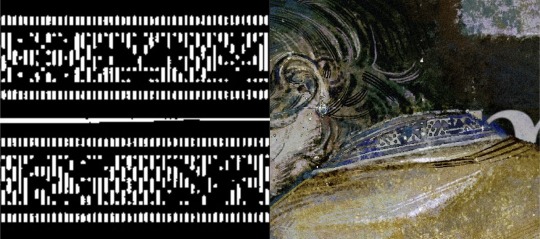
4. Embroidery on Alfred’s sleeves
The pattern is from an illustration in the manuscript of Bede’s Life of St Cuthbert (MS 183, f. 1v) c. 937 in Parker Library, Cambridge, which depicts King Æthelstan showing the book to St Cuthbert himself.
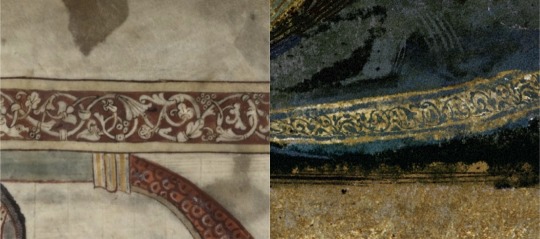
-
The process
Such a pleasure to work on this one! Thank you again for giving me the chance✨
#can i just say i was basically smiling like a weirdo at my ipad the whole time i was working on this#sorry hahahah but I’m so honored to recreate one of my favorite paintings and drawing this somehow gave me life#oh and the flower on the floor is daffodils! saw somewhere that it represented chivalry so… :D#the last kingdom#tlk alfred#alfred x uhtred#uhtred x alfred#king alfred#alfred the great#alhtred#uhtred#hikaru tlk#hikaruchen#AND - if anybody happens to be in desperate need of visual references of Anglo-Saxon clothing or just simply wants to know more about it#check out Dress in Anglo-Saxon England by Gale R. Owen-Crocker#it’s extremely helpful
89 notes
·
View notes
Text
seemingly cool fiber arts person i followed a little bit ago just put radfem shit on the dash, anyway the blanket statement that the only contributions of men to textile production are capitalist/exploitative and the only contributions of women are household-centric/victimized is patently untrue. while less of a documented presence, women in medieval europe [1] absolutely participated in weaver's guilds and commercial cloth production [2], and men have been participating in household knitting in all parts of europe for as long as knitting has been a thing there [3]. like i'm not trying to say women haven't been deeply excluded from economic opportunities in the textile trade for centuries but you cannot be making sweeping statements like that about everyone in every part of the world through all of history and expect them to be true. do, like, a basic level of research and have a basic understanding of nuance, i beg of you [4]
footnotes/sources/etc under the cut, sources are a bit basic because i just grabbed whatever was nearest to hand but they should suffice to prove my point:
[1] i'm only referring to western europe here because that's the only region i feel comfortable talking about in any detail without embarrassing myself. systems of medieval cloth production in european guilds are not gonna look anything like the systems of hundreds of servants employed to do textile production for a household in china. don't make categorical statements about everyone everywhere all at once, you will end up with egg on your face.
[2] quotes from "when did weaving become a male profession," ingvild øye, danish journal of archaeology, p.45 in particular.
england: "in norwich, a certain elizabeth baret was enrolled as freeman of the city in 1445/6 because she was a worsted weaver, and in 1511, a riot occurred when the weavers here complained that women were taking over their work" + "another ordinance from bristol [in 1461] forbade master weavers to engage wives, daughters, and maids who wove on their own looms as weavers but made an exception for wives already active before this act" germany: "in bremen, several professional male weavers are recorded in the early fourteenth century, but evidently alongside female weavers, who are documented even later, in 1440" -> the whole "even later" thing is because the original article is disputing the idea that men as weavers/clothiers in medieval europe entirely replaced women over time. also: "in 1432-36, a female weaver, mette weuersk, is referred to as a member of the gertrud's guild in flensburg, presently germany" scandanavia: "the guild of weavers that was established in copenhagen in 1500 also accepted female weavers as independent members and the rules were recorded in the guild's statutes"
[3] quotes from folk socks: the history and techniques of handknitted footwear by nancy bush, interweave press, 2011, don't roast me it was literally within arm's reach and i didn't feel like looking up more stuff
uk/yorkshire dales: "...handknitting had been a daily employment for three centuries [leading up to 1900]. practiced by women, children, and men, the craft added much to the economy of the dales people." (p.21) uk/wales: re the knitting night (noson weu/noswaith weu) as a social custom practiced in the 18th/19th c.: "all the ladies would work on their knitting; some of the men would knit garters" (p.22) uk/channel islands: "by the early seventeenth century, so many of the islands' men, women, and children had taken up the trade of knitting that laws were necessary to keep them from knitting during harvest" (p.24) -> this one is deeply funny to me, in addition to proving my point uk/aberdeen: "the knitters, known as shankers, were usually women, but sometimes included old men and boys" (p.26) denmark: "with iron and brass needles, they made stockings called stunthoser, stomper, or stockings without feet, as well as stockings with feet. the men knit the legs and the women and girls made the heels" (p.32) iceland & faroe islands: "people of all ages and both sexes knit at home not only for their own use but for exportation of their goods as well" (p.35)
[4] actually? no. i'm not begging for shit from radfems. fuck all'a'y'all.
#fuck it maintagging because i'm genuinely deeply annoyed about this#eta: un-maintagging bc after a couple days' reflection - i stand by the substance of what i said but i don't stand by my tone or attitude#shoot-from-the-hip reactionary anger is seldom effective and more to the point it's not a response of grace or love & i should do it less#aggressive linguistic prescriptivism#<- personal fiber arts category tag#<- that tag can stay tho i think this is an internal use only kinda post
187 notes
·
View notes
Text
When I went to the Getty Villa in LA, I had a moment of such profound connection to the artifacts that it rekindled my love of archaeology. It was one of those moments I knew and understood why it's so important to dig up dead people's garbage.
The Getty Villa had a huge Mesopotamian exhibit with absolutely incredible artifacts. Gargantuan Cuneiform tablets, intricate coffins, incredible statues. I marveled at all of it, recalling all my ancient world history courses from college, soaking in every descriptive sign like a sponge.
And then I reached a display case of gold bangles and dangly earrings.
And I started crying. I'm still crying now thinking back on it and it's been almost three years.
I barely even read the sign; I was so caught up in the jewelry. I could see it in my head. I could see the women sitting around a table, their bangles clanking. I could see a husband walking through his front door and presenting his wife with a gorgeous pair of earrings. I could see her showing them off later to her girlfriends, humble-bragging about how sweet and affectionate her husband was. I could see little girls trying on their mother's jewelry, boys sliding the bangles to hang loose on their arms.
All the artifacts before that point were for the rich, and I knew that. High-society literature and the burial norms of the priests in their high temples and the kings upon their thrones. But jewelry- jewelry was universal. From the wives of the highest ranking men to the daughters of the poorest, jewelry could have belonged to any of them. Passed down through generations, peddled on the streets, purchased through labor and barter if not coins, gifted and polished and worn till it lost all gleam.
And it was like suddenly these were no longer artifacts in a museum. I wasn't standing in a crowded Los Angeles museum hall. I was tracing the contours of someone's favorite bracelet, of earrings that once belonged to someone long forgotten. I could feel these women reaching forward through time, their sun-browned hands missing the weight of their bracelets, their laughter echoing in my ears, the light in their eyes shining in my mind. I ached for them. I was them.
It was the most profoundly human moment I've ever had in a museum. The depth of connection by having this everyday, perfectly ordinary group of items in among the boons of kings and emperors is what I look back on the most about that day, what I remember when people ask why archaeology matters.
I don't really know what my point is to this, but it felt important to share. I hope everyone who frequents museums and libraries and academia someday finds that item that offers connection to people who lived 7,000 years before and 7,000 miles away. In the clink of a bangle, we are the same.
115 notes
·
View notes
Photo



Ancient Tombs and Mummification Workshops Unearthed in Egypt
The workshops were used to mummify humans and sacred animals and date back 2,400 years.
Ancient tombs and workshops used for mummification have been unveiled near the Egyptian capital of Cairo.
The workshops were used to mummify humans and sacred animals and date back 2,400 years.
Clay pots, ritual vessels and other items apparently used in mummification were found in the workshops, said Mostafa Waziri, secretary-general of Egypt's Supreme Council of Antiquities.



The spaces were discovered in the sprawling necropolis of Saqqara, which is a part of Egypt's ancient capital of Memphis, a UNESCO World Heritage site.
They date back to the 30th Pharaonic Dynasty (380 BC to 343 BC) and the Ptolemaic period (305 BC to 30 BC), Mr Waziri said.
The tombs were for a top official from the Old Kingdom of ancient Egypt and a priest from the New Kingdom, according to Sabri Farag, head of the Saqqara archaeological site.
The Old Kingdom tombs were painted with the names of the dead and their wives, while alabaster statues of the tombs' owners were found in the New Kingdom tombs.






#Ancient Tombs and Mummification Workshops Unearthed in Egypt#Saqqara#ancient necropolis#ancient grave#ancient tomb#ancient artifacts#archeology#archeolgst#history#history news#ancient history#ancient culture#ancient civilizations#ancient egypt#engyptian history
157 notes
·
View notes
Text
Actively looking for women in the literary and archaeological sources has led me to uncover material I never knew existed. Most of us are familiar with Mark Antony as the doomed lover of Cleopatra, for example, but relatively few remember his wife Fulvia. Classical historians tell of this astonishingly accomplished woman fighting a war in Antony's name while he continued his affair in the east. I had read these passages with suspicion until I learned of the excavation of lead bullets referencing Fulvia at the site of a siege. These bullets bore messages of abuse. ‘I'm aiming for Fulvia's clitoris’, reads one.
The complicated relationships between women and men are an inescapable part of this story. Antony was, in my view, an unworthy husband for Fulvia, and an unworthy husband, too, for his next wife, Octavia. I have repeatedly been struck by the ill-treatment that wives received at the hands of their husbands, fathers, guardians and politicians, and by the courage with which these women sought to forge their own paths. It may be true that behind every great man is a great woman, but it is often also the case that in front of every great woman is a man who believes he is great. It is a bold and subjective claim to make, but the sources speak clearly for themselves.
-Daisy Dunn, The Missing Thread: A Women’s History of the Ancient World
19 notes
·
View notes
Photo
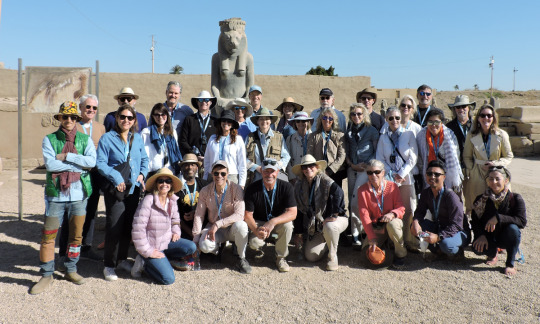
We began work on January 28, but the highlight of this week was the January 31 visit to the site by Anne Pasternak, the Brooklyn Museum Director, and members of the Museum’s Board of Governors. We were thrilled to be able to show them the site where Brooklyn has worked for the past 40+ years. We hope they enjoyed their visit.

As promised last week, here are the members of our team. Our foreman again this year is Abdel Aziz Farouk Sharid (left). He and our inspector, Haitham Mohamed Sa’ad el-Din are discussing the season’s work. The Supreme Council of Antiquities (SCA) assigns an inspector to every expedition to act as liaison with the SCA and help facilitate the work. We are happy to have Haitham with us this season.

Besides Abdel Aziz, the Qufti who working with us this year are Abdel Aziz’s brother Ayman Farouk Sharid (center), the foreman for the Johns Hopkins University expedition who works with us when Hopkins isn’t in the field; and Mamdouh Kamil, who has worked with us for many seasons. All are from the village of Quft (ancient Coptos), which has a long tradition of archaeology going back to the late 19th century. Ayman and Abdel Aziz are the sons of one of the great Egyptian archaeologists, the late Farouk Sharid Mohamed, who was a beloved friend and treasured colleague. His sons are worthy successors to him.
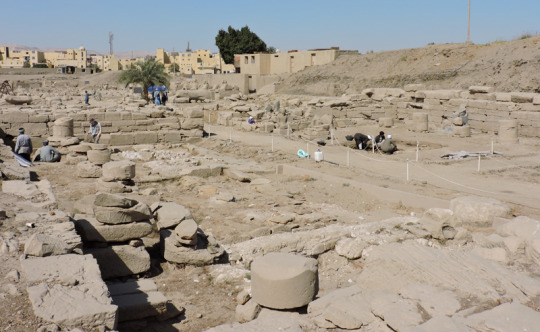
You are looking northwest at the first court of Temple A, which stands northeast of the Mut Temple. We are working in two areas of the court this year. In 2019 we were able to confirm that that the row of limestone features on the court’s south side were sphinx bases. This season we want to see if there are remains of corresponding bases on the north side (right). We are also clearing the corridor between the south colonnade and the south wall of the court (left).
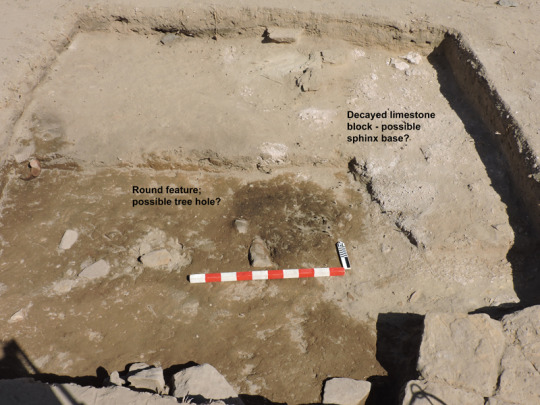
By the end of the week (February 2) the results in the north square were equivocal. Looking north, you can see an area of decayed limestone on the right side of the square that might be the remains of a sphinx base. On February 1, Mamdouh uncovered the round, dark feature to the left of the “sphinx base” that might be a tree hole. Sphinx avenues often had trees planted between the sculptures.

The work on the corridor was more productive. By the middle of the week Ayman had cleared a mass of broken stone and revealed the lowest course of the court’s south wall (left) and the footing of the temple’s 2nd Pylon. Both sit on a sand foundation that you can see below the blocks of stone. It was common to use sand in the foundations to level out uneven ground.
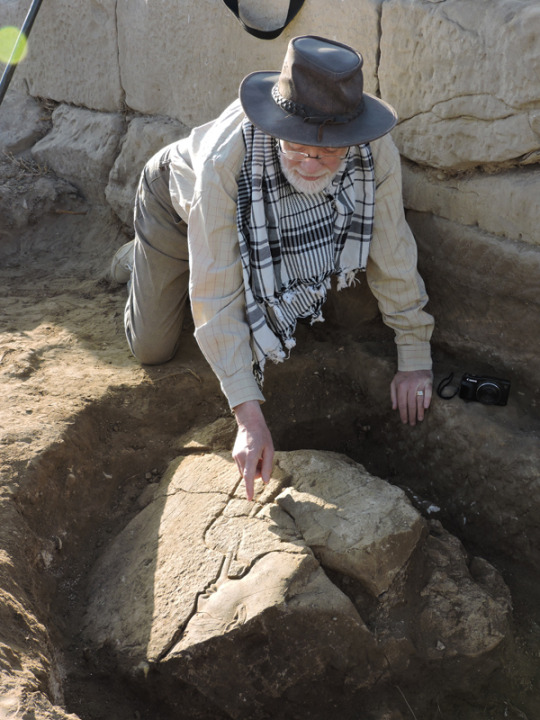
On February 1 our Dutch colleague, Jacobus (Jaap) van Dijk joined us for another season. First thing on the morning of February 2, Ayman called us over to show us an interesting find: a large relief-decorated block. Jaap immediately got down to have a look.

The block has a beautifully carved relief of Amun that clearly is Thutmoside in style, that is, from the reign of Hatshepsut and/or Thutmosis III, of the mid-15th century BC. What makes it particularly interesting is the small, shallowly carved graffito of a God’s Wife of Amun facing the Amun and dating stylistically to Dynasty 25 or 26, about 700 years after the god’s face was carved. God’s Wives of Amun were priestesses, usually the sisters or daughters of kings, who wielded great political power in the Third Intermediate Period and later.
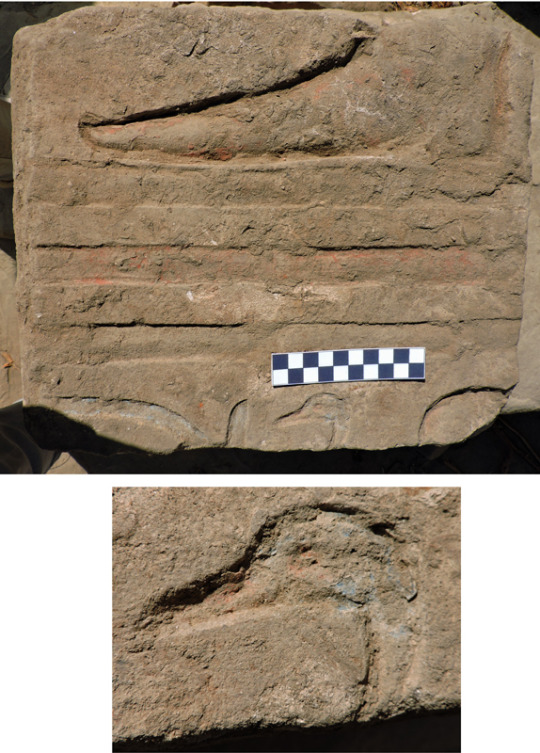
Just west of the Amun block was smaller cube of stone with a sunk relief depiction of a man’s foot on base lines with the top of a cartouche and the “son of Re” title below. The style of the foot (very long) and the vertical element of the cartouche date it to the reign of Akhenaten. It probably came originally from his temple in East Karnak, built before the king moved the capital to Amarna. The artist paid attention to detail when painting the relief, painting the head of the goose (“son”) blue but its beak and eye red. The Brooklyn Museum has an interesting group of Amarna Period reliefs showing a pastoral scene.
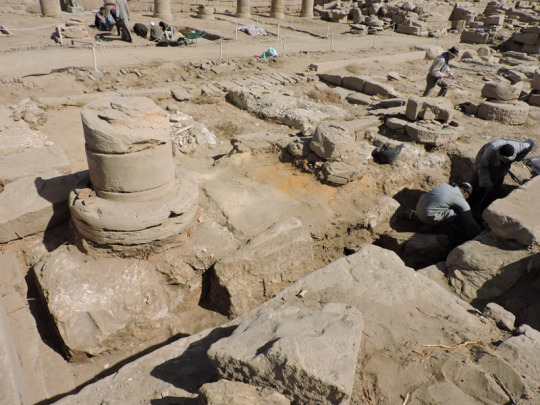
By the end of the week Ayman and his crew had cleared the bases of the first 3 columns of the colonnade, working from west to east. The blocks of the bases are large: 70 cm by 125 cm and almost 100 cm thick.
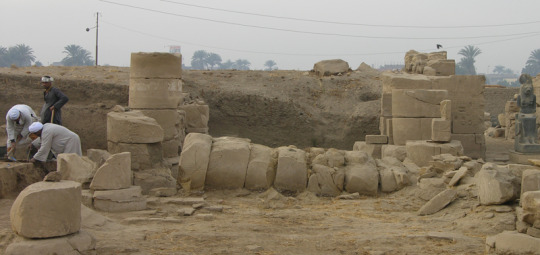
We are also planning on restoring 2 fallen columns in the colonnaded porches in front of the Mut Temple. The one in the East Porch is shown here as it was found in 1979. Work hasn’t started on these yet; there will be more about the restoration next week.

One of our favorite birds is the tiny, bright bee eater, so called because it catches insects in mid-air. This is the first we’ve seen this season.

An unusual cloud formation seen at sunset one night. Angels? Extraterrestrials?
Posted by Richard Fazzini and Mary McKercher
#BkMMutDig#MutDig#Mut#temple#Egypt#excavation#BkMEgyptianArt#egyptian art#egyptian#amarna period#Akhenaten#Thutmoside#archaeology#Brooklyn Museum#brooklyn#museum#art
222 notes
·
View notes
Text

what no I’m not obsessed with these two characters that no one ever talks about and that have never interacted canonically. That’d be crazy
41 notes
·
View notes
Note
Could you tell me more about yourself?
It is for something important.
Oh yeah sure!
I’m cyberr, I go by a lot of names, currently my favourites are Phoenix, Leonardo, and Jackdaw. I use any pronouns and I am asexual.
I have numerous skin conditions, feet bones in the wrong place, and a really bad back at the moment, as well as chronic daily headaches . So uh. You could say that I am as fit as a fiddle, if the fiddle in question is the one in my garage, which has all its strings snapped.
I really enjoy reading, and have done since I was seven. I’m currently reading the reappearance of Rachel Price, as well as the Iliad. Some of my most favourite books include: the wizards of once, how to train your dragon, murder most unladylike, all about romance, Sherlock Holmes, and treasure island.
I’m also a writer, I’ve been working on this one story for five years now. Hopefully I’ll finish it one day. I write a lot of poetry.
I love mysteries and have been apart of numerous mystery solving groups, several founded by me.
I’m an artist, of course, and my top three mediums are pencil, watercolour, and digital. I’m not the best at digital tbh. I hate acrylic and acrylic hates me.
I usually do a lot of sports but right now because of my back I can’t do a few of them. I can still do swimming, archery, rounders (tragically:/), stand up paddle boarding, and roller booting. Because they don’t involve as much bending down.
I’m gay
I’m a part time goth, which is to say I listen to goth music (my favourites atm are fields of the Nephilim and all about Eve) but only sometimes dress goth, and in varying degrees of goth. I am the most inconsistently dressing person I know, and right now my catchphrase is ‘the duality of man’. For some reason.
Music wise I listen to a lot. One day I will truly be able to say that I listen to everything. But not yet. My most favourite band is the crane wives
I want to be a marine archaeologist when I’m older, or, failing that, a famous actor. Let’s be honest here, unless I do become a really famous actor, neither career path is likely to pay well. Marine archaeological, or maritime archaeology, is all about ships wrecks, and how cultures of the past interacted with the ocean and other bodies of water around it.
I like all the animals. Genuinely there is lot a single animal that I don’t like. Well- I’m not too keen on bugs but I wish them all the best, and may many of them please stay away. I have a severe phobia of moths, and slight arachnophobia that depends on how I’m feeling and what the spider is. Tarantula? No problem, big and hairy enough to be a kitten. Now let’s move away from it in case it sprays its hairs. Brown garden spider? Bloody Mary on a motor bike get it Away.
My attention span is low. I am a theatre kid. As I type this is have a musical going in the background.
. I’m so sorry I’ve kinda made this really long, idk how much information you need
Fandoms: rise: tmnt, Percy Jackson, the owl house, the dragon prince, httyd, the inheritance cycle, red wall, Sherlock Holmes, mythology, epic the musical, so much more I can’t think of right now
I love the ocean
Lmk if you need anything else, hope this has helped, and uh. Yeah it’s kind long winded
14 notes
·
View notes
Text


By Jane von Mehren
11 January 2023
The highly civilized Etruscans had a huge impact on the city’s eventual geography, architecture, government, trade, and agriculture.
They created excellent schools to which rich Romans sent their sons, much as they would later send them to Greek institutes.
By the sixth century B.C., some of Rome’s most famous institutions, from the Forum to the Senate, were in existence but even the most reputable historians — including Fabius, Livy, and Plutarch — started their accounts of the empire in legend.
Legendary beginnings

The story of Rome’s founding begins in Alba Longa, the first “city” of Latium, a region in central western Italy, occupied by Latins.
The area had been inhabited since the Bronze Age by farming communities and was known to the ancient Greeks, which is perhaps why Aeneas, a Trojan prince, is said to have established it around 1150 B.C.
According to legend, in Alba Longa, two of Aeneas’s descendants, the brothers Amulius and Numitor, fought over who would rule.
Amulius triumphed, killing Numitor’s sons and exiling his daughter, Rhea Silvia, to become a Vestal Virgin.
Through divine intervention, she gave birth to the twins Romulus and Remus.
Threatened by these potential claimants to his throne, Amulius beheaded Rhea Silvia and abandoned the babies in the river Tiber.
Miraculously, a she-wolf rescued and cared for the boys until a shepherd, Faustulus, adopted them, raising them on the Palatine Hill, located in modern-day Rome.
The legend goes on to say that the brothers established the city of Rome on the banks of the Tiber River, where it was narrow enough for crossing and the hills provided a good defensive position.
The land between the hills, however, was quite marshy and not all that fertile.
The twins soon quarreled about the city’s exact boundaries and Romulus killed Remus.
Romulus, along with the outlaws and criminals he recruited, invited neighboring tribe the Sabines, who had resisted intermarrying with the Romans, to a fête.
During the merriment, Romulus raised his cloak signaling his men to seize and abduct the young Sabine women.
As the origin story goes, being Roman wives suited the women and they stopped the Sabine men from battling the Romans when they came to recapture them.
In the end the Sabines remained in Rome as part of the new city.
Influences in the area

Archaeological evidence tells us that Rome’s actual origins were less dramatic.
The first Romans were Latin farmers and shepherds living in small village huts on the Esquiline and Palatine hills.
The Sabines, a tribe living to the north, divided soon after the city’s founding, and some of them came south and united with Rome’s people.
Rome remained relatively primitive until the 600s B.C., when the Etruscans, who controlled a series of city-states to the north, began taking control of the city.
Kingdom of Rome
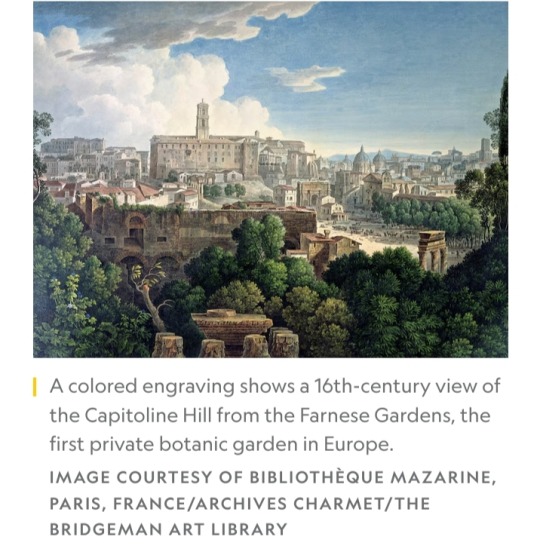
While modern scholars discount some of the accounts of ancient Roman historians, they agree that during the first phase of its history — from approximately 753 to 509 B.C. — Rome was ruled by kings.
According to these writers, Romulus was the first, succeeded by Numa Pompilius, a Sabine, and in 616 B.C., by an Etruscan named L. Tarquinius Priscus.
Kings had almost absolute power, serving as administrative, judicial, military, and religious leaders. A senate acted as an advisory council.
The king chose its members, who became known as patricians, from the city’s leading families.
Unlike later monarchs, Roman kingship was not inherited.
After a king died, there was a period known as an interregnum, when the Senate chose a new ruler, who was then elected by the people of Rome.
The king-elect needed to obtain approval of the gods and the imperium, the power to command, before assuming his throne.
Etruscan influences
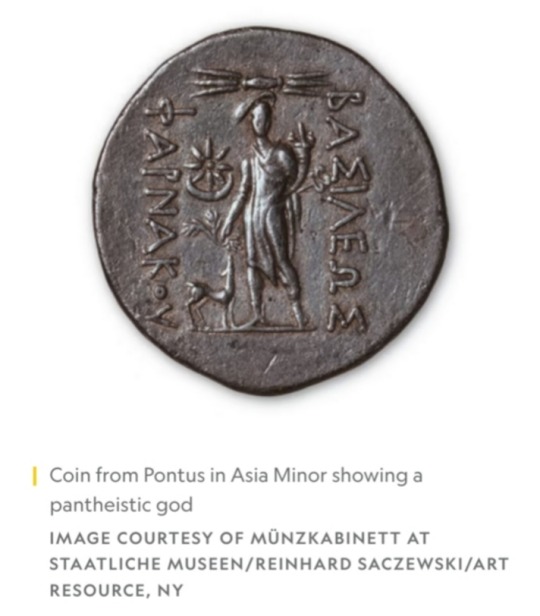
The Etruscans ruled a loose confederation of city- states that stretched from Bologna to the Bay of Naples.
It remains unclear where they originated, but they used a version of the Greek alphabet and some ancient sources describe them as coming from Asia Minor.
Around 650 B.C., they were already dominant in the region and took control of Rome, wanting its strategic position on the Tiber.
Under Etruscan kings, Rome grew from a series of villages into a proper city.
The Etruscans drained the marshes around the city, constructed underground sewers, laid out roads and bridges.
They established the cattle market, Forum Boarium, as well as Forum Romanum, the central market and meeting place that evolved into the heart of the empire.
Toward the end of this period of Etruscan influence, the first temple of Jupiter was built on the Capitoline Hill.
This temple, although rebuilt many times, became the symbol of Rome’s power.
Founding the Republic

The era of Roman kings ended in 509 B.C., when the Romans supposedly expelled the last Etruscan king, L. Tarquinius Superbus, in another mythicized event.
As recounted by historians, including Livy, the son of Tarquinius Superbus, Sextus, raped at knifepoint the noblewoman Lucretia, wife of the king’s great nephew.
Lucretia, feeling that her honor and virtue had been lost, committed suicide.
Her uncle Brutus swears to avenge her and commits to revolution and the expulsion of the monarchy.
To the Roman people, her story represents the tyrannical powers of the monarch on the state, and so the saga of Lucretia is cited as the event that spurred the Roman Republic into being.
In place of the monarchy, Romans established a republic, which lasted until 30 B.C.
Over the course of nearly five centuries, Rome became a dominant Western power, seizing territory throughout the Mediterranean, creating an enormous and efficient army, and learning how to administer its vast provinces.
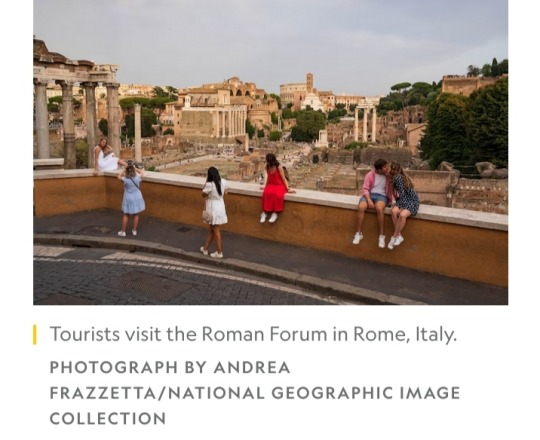
NOTE:
The traditional date for the founding of Rome is 21 April 753 BC.
#Rome#Ancient Rome#Romulus#Remus#Alba Longa#Latium#Italy#Aeneas#Amulius#Numitor#Rhea Silvia#Vestal Virgin#Faustulus#Palatine Hill#Tiber River#Sabines#Etruscans#Numa Pompilius#L. Tarquinius Priscus#interregnum#imperium#Forum Boarium#Forum Romanum#Capitoline Hill#Temple of Jupiter#L. Tarquinius Superbus
8 notes
·
View notes
Note
I remember the book thief. It was a good, sad, book.
I held off answering this until I finished the book, and here we are. I finished the Book Thief yesterday.
It is a very good book and I highly enjoyed my time with it. I also think it is a very important book, and it deserves the accolades and awards it has achieved over the years since its first publication.
That all sounds like I'm gearing up for a 'but', doesn't it?
I'm not, not really. But I've found myself coming back to the comment of 'sad' a lot while I was listening to it and since I finished it.
I say the following to give context to my approach to the book, not to associate myself directly with the struggles of the characters, or the historical events they are based on in an exploitative or inherently informed manner.
A bit of background on me. I'm a history nerd. I did an undergraduates degree in ancient history and archaeology, I watch documentaries for fun and leisure, I regularly consume books that deal with world history and such things do not shy away from difficult topics.
Side recommendations for non-fiction books related to WW2 and the topics discussed in the Book Thief:
Their Darkest Hour: People Tested to the Extreme in WWII by Laurence Rees
The Good Germans: Resisting the Nazis, 1933-1945 by Catrine Clay
Nazi Wives: The Women at the Top of Hitler's Germany by James Wyllie
The Holocaust: A New History by Laurence Rees
The Vanquished: Why the First World War Failed to End, 1917-1923 by Robert Gerwarth
Obviously Content Warning for Extreme Violence, Radicalisation, Bigotry, Genocide, and Psychological Trauma. These are not pleasant books at times, they are important.
Secondary bit of background info on me. My Grandfather served in the Royal Signals Corp during WW2 and volunteered the day war was declared in England. He served in Africa, Italy, took part in the D-Day landings, moved up through Belgium, the Netherlands, then into Germany where he and his unit were put in charge of minding SS prisoners in a converted concentration camp, north-northeast of Hamburg, for two years after peace was declared. During his time in Germany before the official end of the conflict, he served as a signalman with the 15th Scottish Division, this includes the liberations of Bergen Belsen, Neuengamme, and a sub camp of Neuengamme, Bad Segeberg concentration camp, the latter of which is where the SS prisoners were held.
I am incredibly lucky for three things in relation to my Grandfather:
He and my Grandmother kept all their letters from the war, labelled them in frankly archival detail, and passed said letters down to me.
Working in Signals allowed my Grandfather to write about events during the war that might not have otherwise made it past army censors, such as details, and dates.
He was a very good writer, and he wrote every day about all that he had seen.
Now, all that out in the open for everyone to get on the same page (more or less), back to the Book Thief.
In all honesty, I laughed and cheered more times than I felt upset while listening to it. I adore Rosa Hubermann, though I'd loathe her in reality if I had to deal with her, she and her 'tact' made me cackle with glee so many times. Zuzack's descriptions are as beautiful as they are at times a little too flowery for my personal tastes, but they are immersive despite this. And of course the Narrator is wonderful.
I always knew what was coming and the depth of what was happening beyond our view of events in the story, so it did take some of the punch out of matters for me. I couldn't ever say I was sad while listening to it.
A book can be read in as many ways as there are individuals to read it. My reading of it left me with a strong impression of civilian life during the third reich from a child's perspective, it taught me how to swear in German much to my (learning) German-speaking father's delight and bemusement, and it's given me a new recommendation to put forward to the teen offspring of friends as a good first book to discussing the complexities of WW2.
So, yes. I highly recommend the Book Thief by Markus Zuzack.
28 notes
·
View notes
Text
An introduction I guess

" They might try to tell you how you can live your life/But don't forget it's your right/To do whatever you like " - Spotlight (Oh Nostalgia), Patrick Stump

Hey, I'm Corin(or Cory or Cor), or XO, or maudlin scribbler or madulin or scribbler. Honestly I like being called either of those names, or nicknames or variations of them. Also call me Cory too, perhaps.

17 years old, and will be so for some months still. Born in november.

Any pronouns.

Queer, kinda transgender, my gender is also eather fluid as well.
I am also on the aroace spectrum, somewhere there haha. And I guess I am pansexual as well.

School wise, I suppose I could say that I am sort of studying the social sciences. I love anthropology, archaeology and history, they are quite some of the major loves of my life, along with mythology and folklore.
I do love astronomy and space in general, but I am not very knowledgable in these sort of things. Frankly, I am so fucking bad at science.

romanian! With greek and ukrainian roots. I speak romanian, english (hopefully), a tad bit of french and I am trying to learn greek.

Hope you don't mind the obnoxious amount of dividers!
Also check out my friend @mintmacaroonn !!!! They're a pretty cool dude, I'd say.
Also the tag #corin's lore is basically my talking tag. I tag my art under the tag #my art.

Hobestly, I have a lot of interests, some of which I'll list here and all of them will be listed in the tags(eventually). Some of them I don't think of very much, while some are currently consuming my mind haha. Frankly the best way to find out if I know something though is to ask me!
I love gothic literature, such as the Invisible Man by H. G. Wells(bold and in colour 'cause I love it so much despite not talking about it for a while haha. Don't remember that much of it tho, wanna reread it again someday). I have read some other books too. Yeah, I've read PJO (and a little bit of HOO). And Frankenstein(and Jekyll & Hyde). I love sitcoms, I've wached The Nanny and FRIENDS and some other 90s & 2000s sitcoms, I think. I like Superstore, and I have indeed watched 1670 (netflix) and loved it, and Rise of Empirea: Ottoman. And Seinfeld, yeah. Kinda like lore rekindled too, ngl.
Of course, as I have said before, I love history!
Love Ride The Cyclone!
I like cookie run (I mostly have played kingdom though) and have played a bit of reverse 1999
Yes, I do like hetalia (but I'll only really talk about it on my side blog, @estbela , for the forseeable future.). I'm critical of it, I guess.
Despite my love for music, I struggle with checking out artists and stuff, but I do love the Crane Wives and Fall Out Boy(albeit I've only recently started really listening to them, I haven't really listened to all their stuff or anything but they're cool)! And I do love Patrick Stump's solo stuff too haha, soul punk is awesome. Which might be obvious because of me putting a quote from one of the songs at the top of this post. I also love other music too!!!! :]
Hobestly i love a lot of other things too.
[ I do want to mention that I am critical of my interests and stuff, and don't blindly love stuff. If one of my interests contains 'problematic' things, it doesn't mean I condone it and sometimes I might not even know about it. ].
AO3 -> I.
Twitter -> II.

Sometimes I might talk about myself or my life, vent a little I guess haha. I really like complaining about stuff, it seems. I struggle with my mental health, but I try not to talk about it too much.
Dunno if I have dyslexia, but I do have some similar struggles with people who do have it. Including my struggle with spelling, but I do try my best. I...probably have ADHD? Maybe some other couple things, who knows.

have a lot of ideas for original stuff. Will perhaps try to talk about those ideas...eventually. Sometimes I also think I am funny.

Feel free to ask me stuff also!!!
Thanks for reading this whole thing! :]
...Will probably edit this if I can think of other stuff to mention, or when I feel like it.
-dividers by @/saradika-graphics -> x.
-my old pinned post -> x.

A hug for you! :D
Also a cool blinkie thing <3

3 notes
·
View notes
Text
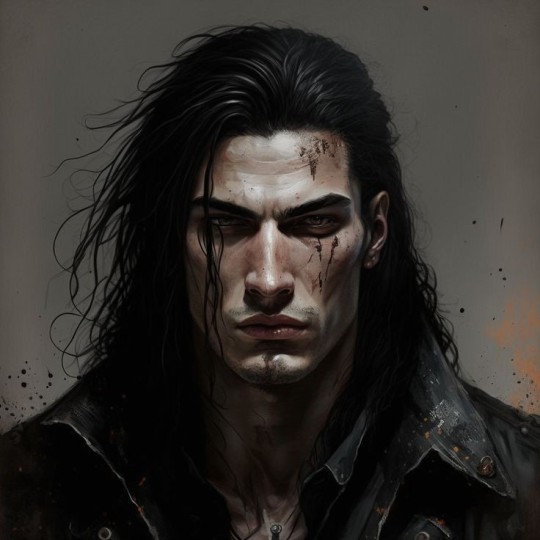




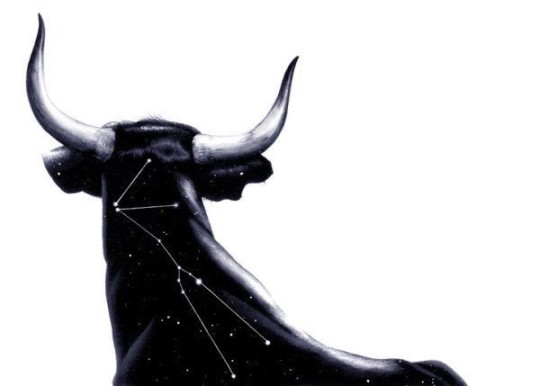




El/El Elyon/El Shaddai = "Ēl (Hebrew: אל) is a Northwest Semitic word meaning "god" or "god". In the English Bible, the derived name Elohim is usually translated as "God", while Yahweh is translated as "The Lord". El can be translated as "God" or "god", depending on whether it refers to the One God or a lesser divine being. As an element in proper names, "el" is found in ancient Aramaic, Arabic, and Ethiopic languages, as well as in Hebrew (for example, "Samu·el" and "Jo·el"). In the post-biblical period, "el" becomes a regular element in the names of angels such as "Gabri·el", "Micha·el", and "Azri·el", to denote their status as divine beings. The semantic root of the Islamic word for God "Allah" is related to the Semitic word El. In the Bible, El was the deity worshiped by the Hebrew patriarchs, for example as El Shaddai (Almighty God) or El Elyon (Most High God) before the revelation of his name Yahweh to Moses. But El was also worshiped by non-Israelites, such as Melchizedek (Genesis 14:9). Scholars have found much extra-biblical evidence of canaanite worship of El as the supreme deity, creator of heaven and earth, the father of mankind, the husband of the goddess Asherah, and the father of many other gods. Canaanite mythology about El may have directly influenced the development of later Greco-Roman stories of the gods."
"In canaanite religion, or levantine religion as a whole, Eli or Il was the supreme god, the father of mankind and all creatures, and the husband of the goddess Asherah, as recorded in the tablets of Ugarit. The word El was found at the top of a list of gods as the Elder of the gods or the Father of all gods, in the ruins of the Royal Library of the Ebla civilization, at the archaeological site of Tell Mardikh in Syria dated to 2300 BC. He may have been a desert god at some point, as myths say he had two wives and built a shrine with them and their new children in the desert. El spawned many gods, but the most important ones were Hadad, Yam and Mot."
#history#El#God el#Canaanite god#Phoenician god#god of israel#Israel#Gods#my favorite#mythology#Mythology#God of storm#god of creation#God of heaven#God of bulls#God of skies
23 notes
·
View notes
Text

Coin reveals little-known Roman ruler
Treasure hunters have unearthed a coin bearing the head of a virtually unknown Roman ruler who briefly held power in Gaul around A.D. 270 as the empire teetered.
It is only the second coin ever found showing the head of Domitianus, who seized power — and the mint — in the breakaway Gallic Empire, which included modern England, France and parts of Germany and lasted for 15 turbulent years.
“We know next to nothing about Domitianus, except that he was ‘punished’ by the Roman Emperor Aurelian for treason,” Richard Abdy, curator of Roman coins at the British Museum, told Reuters. “But at least now we know what he looked like.”
Studied by coin experts
The first coin bearing Domitianus’ head was found in the Loire area of France in 1900, dismissed as a fake because his name was unknown and then lost from sight in a small museum in Nantes until very recently.
“It is now being studied by numismatists. When I showed our coin to the woman who has been working on it she jumped for joy because it bore out everything she had said about hers,” Abdy said, noting the French coin had been dated to A.D. 271.
The Gallic Empire was established in 260, when rule from Rome was weakening, by Postumus. He was succeeded nine years later by Marius, who held the throne for a matter of weeks before being strangled and in turn replaced by Victorinus, who ruled until 271 when he too was murdered.
Domitianus is believed to have murdered Victorinus, who had a habit of raping the wives of his subordinates, before himself being ousted by Tetricus. Tetricus ruled from 271 to 274, when he was defeated by Aurelian and the empire was restored.
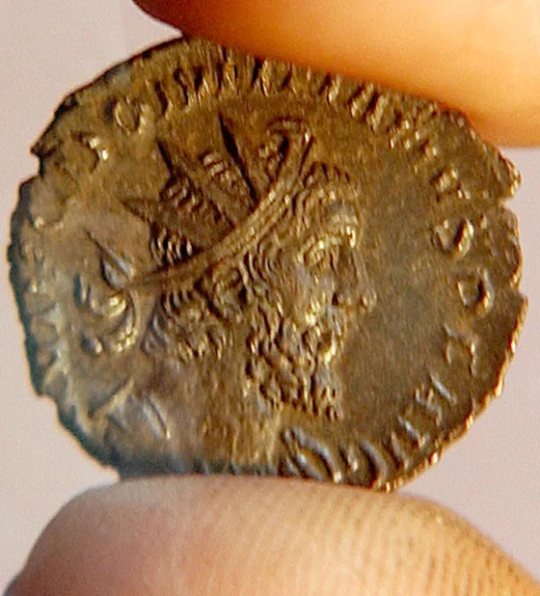
Found on farmland
The British coin, which goes on show at the British Museum starting Wednesday, was found on farmland near Oxford just under a year ago as part of a hoard of 5,000 Roman coins fused together in an earthenware pot.
“It is a type of coin we know as a ‘radiant’ because there are rays radiating from his head. It is a two-denarii piece, which at that time, when they were coining money as fast as they could, would have been worth a couple of hours’ work,” Abdy said.
The base metal coin, which originally had a surface coating of silver, is now conservatively estimated to be worth a five-figure sum, Abdy said.
At the time it was minted, the once-mighty Roman Empire was undergoing a period of intense flux.
The years between 270 and 285 were marked by chaos in the empire, with more than 20 different emperors and 30 different pretenders fighting for power. Only one of these leaders died a natural death.
By Jeremy Lovell.
Original posted Feb. 24, 2004.
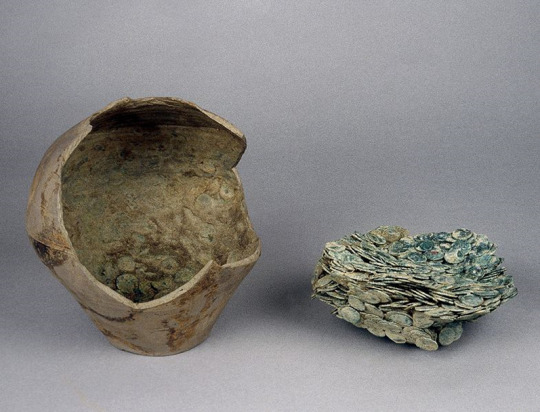

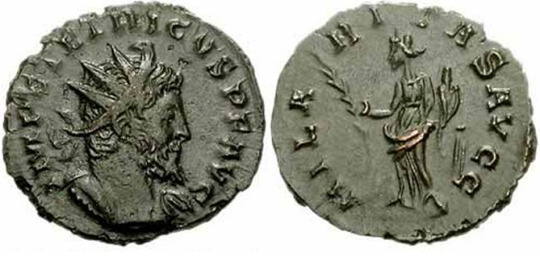
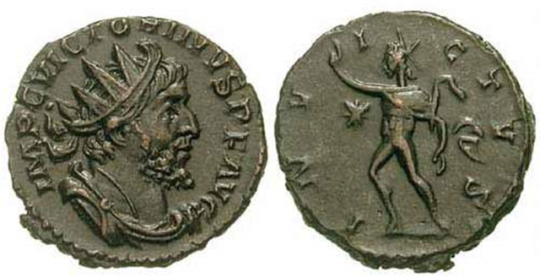
The Coin Hoard
Until this discovery was made some scholars doubted the historical significance of Domitianus who is named just twice in the historical sources. The Oxfordshire coin provides archaeological evidence suggesting that he successfully proclaimed himself emperor of a breakaway part of the Roman Empire during the reign of Aurelian (AD 270-5).
Richard Abdy (Curator of Roman coins at the British Museum) said that ‘during the 270s AD the fabric of the Roman Empire had become strained. Breakaway empires, like the so-called ‘Gallic Empire’ that included Britain, were established and ruled by a succession of rebel emperors. Finding a coin produced in the name of Domitianus means that he should now be recognised as one such rebel emperor.’
The failure of Roman writers to identify him as a rebel emperor even led the only other coin of Domitianus – found in France in 1900 – to be dismissed as a modern fake. The new discovery was struck from the same dies that were used to produce this earlier find and has therefore put its authenticity beyond any doubt.
Ian Leins (Finds Adviser, Iron Age and Roman coins, Portable Antiquities Scheme) said ‘the portrait on the new coin very closely resembles that of the rebel emperors Victorinus and Tetricus. It is highly possible that other coins of Domitianus exist in the collections of museums and individuals but have escaped detection. It is important that people start to pay more attention to these often neglected finds and record them with their local Finds Liaison Officer.’
#Coin reveals little-known Roman ruler#coins#collectable coins#roman coins#rebel emperor#Domitianus#Gaul#Gallic Empire#Aurelian#ancient artifacts#archeology#archeolgst#history#history news#ancient history#ancient culture#ancient civilizations#roman history#roman empire#roman emperor
62 notes
·
View notes